Are you looking to streamline your procurement process and secure the best deals for your organization? Crafting a compelling letter for a vendor bulk purchase proposal can make all the difference in negotiating favorable terms and fostering strong partnerships. In this article, we'll explore effective strategies and key elements to include in your proposal letters, ensuring you communicate your needs clearly and persuasively. Join us as we delve deeper into the essentials of writing an impactful vendor proposal!
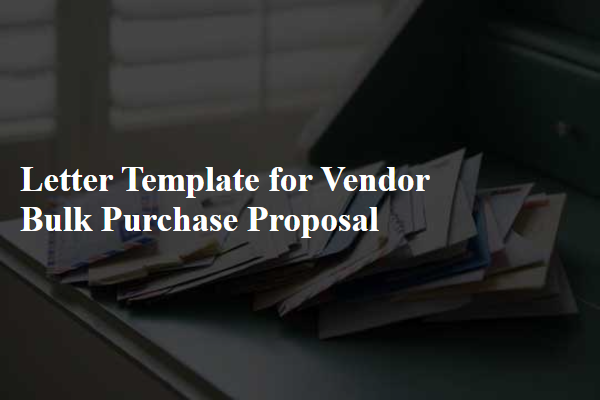
Clear Objective Statement
A well-defined objective statement is crucial for vendor bulk purchase proposals, outlining the intent to procure large quantities of goods or services efficiently. This statement should specify the desired product types, such as office supplies or raw materials, and anticipated order volume, potentially exceeding 1,000 units per transaction. It should also highlight key benefits of the partnership, including cost savings due to bulk discounts and improved supply chain reliability. For example, securing a long-term agreement with a reputable vendor can lead to price stability and prioritization during shortages. Overall, a clear objective statement sets the foundation for effective negotiations and successful vendor relationships.
Detailed Quantity and Specifications
A bulk purchase proposal for vendors typically includes a comprehensive outline of quantities and specifications necessary for procurement. For instance, a proposal may enumerate a request for 500 units of premium-grade stainless steel cutlery sets, each containing a fork, knife, and spoon, ensuring durability and rust resistance. Specific dimensions of each cutlery piece could be listed, such as the fork measuring 7.5 inches, the knife 8.5 inches, and the spoon 6.5 inches, along with a request for an eco-friendly packaging option that accommodates all 500 sets. The proposal may also detail the expected delivery timeline, such as 30 days from the date of purchase order, highlighting the need for compliance with local regulations for food-related items, ensuring that all products meet health and safety standards mandated by organizations like the FDA (Food and Drug Administration).
Pricing and Payment Terms
Pricing structures for bulk purchases often vary significantly based on volume thresholds and item categories. For instance, a vendor may offer tiered pricing that decreases unit costs as orders increase, encouraging larger purchases. Common payment terms include options such as net 30, net 60, or payment in advance, which dictate the timeframe in which total amounts are due. Discounts for early payment or cash transactions can incentivize prompt settlement. Additionally, freight and handling fees may apply depending on shipment sizes and destination locations. Clear articulation of these financial terms contributes to transparent vendor relationships and well-informed purchasing decisions.
Delivery Schedule and Conditions
A detailed delivery schedule is crucial for ensuring timely receipt of bulk purchases and maintaining operational efficiency. For instance, vendors should specify delivery timelines such as weekly intervals or specific dates, like the 1st and 15th of each month, based on the agreed order volume. Conditions like packaging standards, handling requirements, and temperature controls for perishable items must be outlined, particularly for products sensitive to environmental factors. Additionally, any penalties for late deliveries or protocols for handling discrepancies in order quantities should be defined, ensuring all parties understand the expectations for a seamless transaction process.
Benefits and Value Proposition
A vendor bulk purchase proposal can significantly enhance procurement efficiency for a business by leveraging advantages such as cost savings, streamlined logistics, and strengthened supplier relationships. Cost savings manifest in discounted pricing structures often offered for large order quantities, enabling businesses to optimize their expenditures on essential goods or services, ultimately improving profit margins. Streamlined logistics occur as bulk purchases typically reduce the frequency of orders, leading to lower shipping costs and less administrative workload. Strengthened supplier relationships arise from ongoing collaboration and reliable purchasing patterns, fostering trust and potential future negotiation advantages. Such a proposal not only positions the business favorably in the marketplace but also enhances its sustainability initiatives by reducing transportation impacts through fewer shipments.

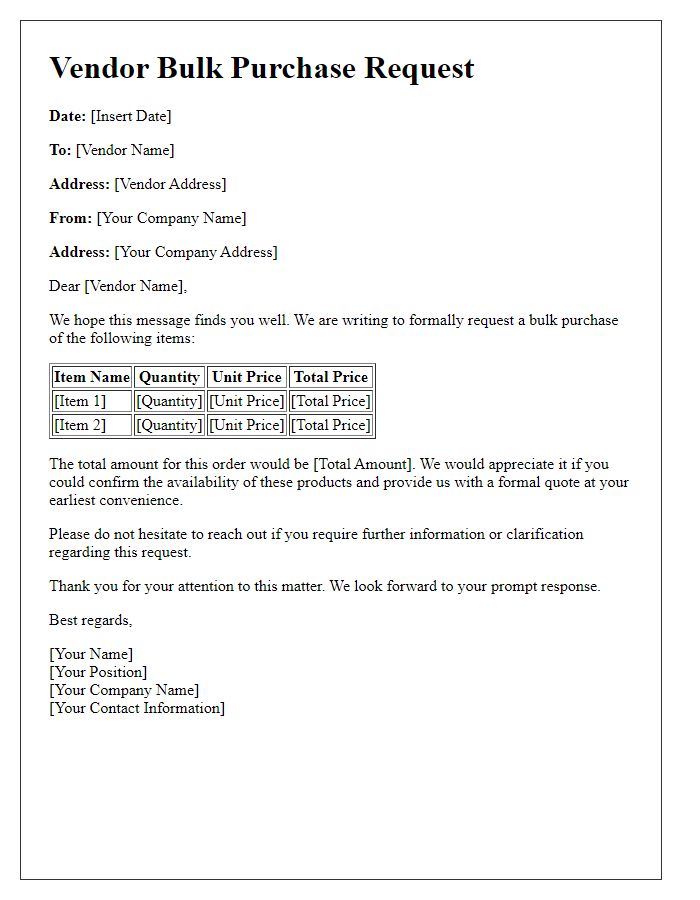
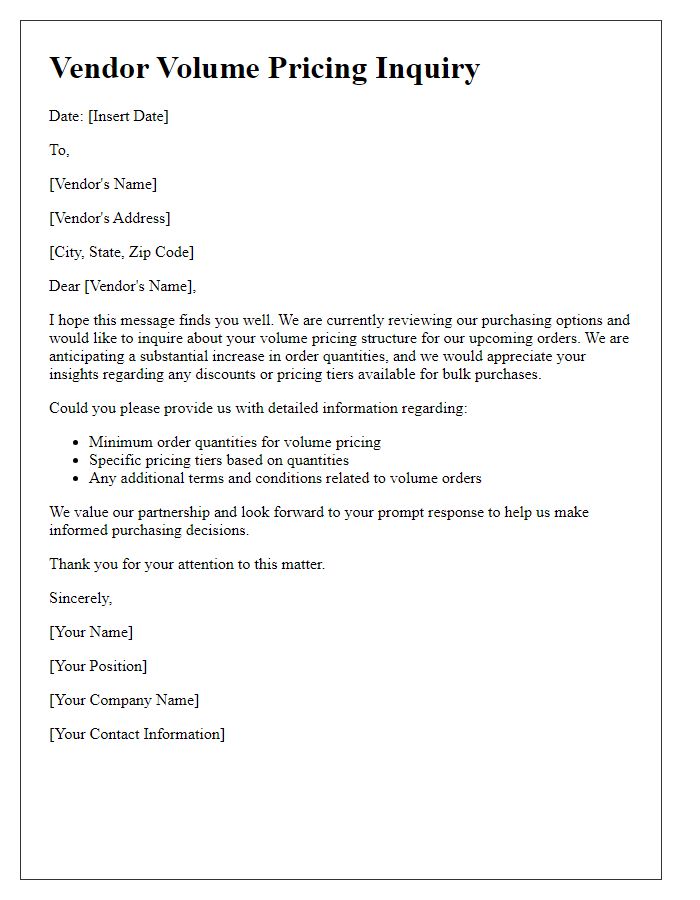
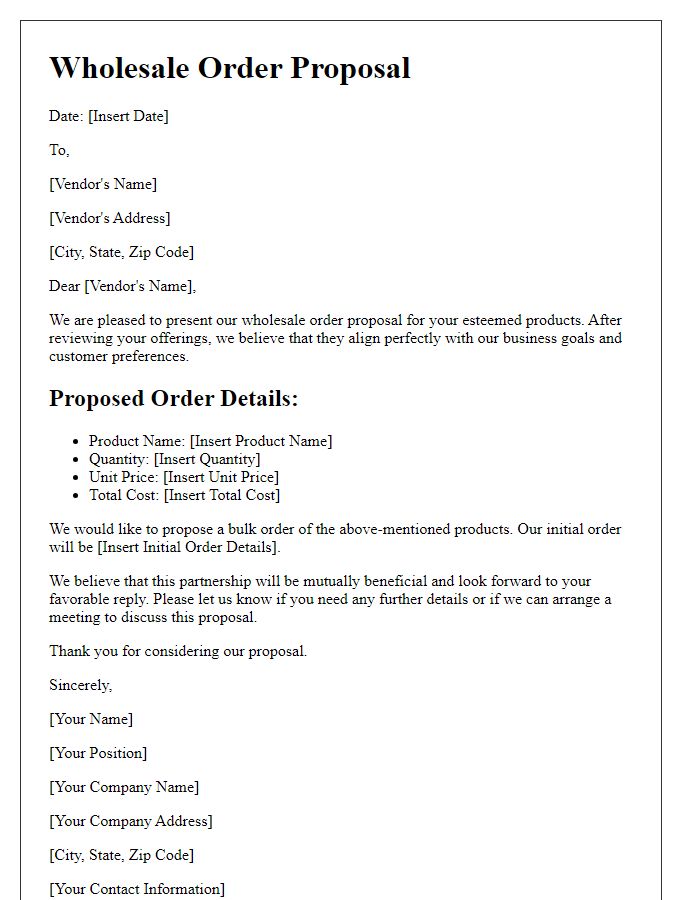
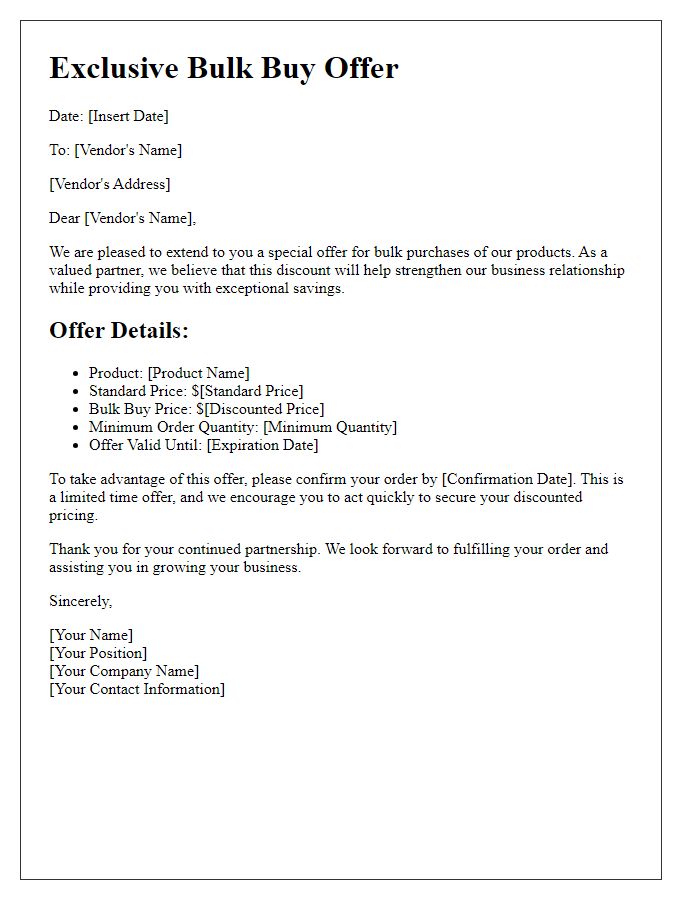
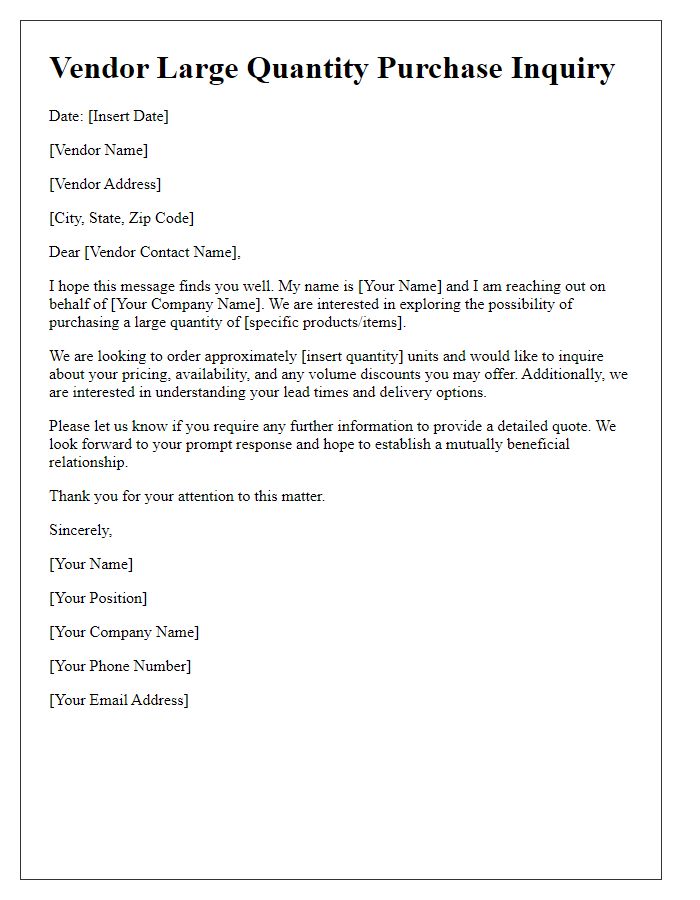
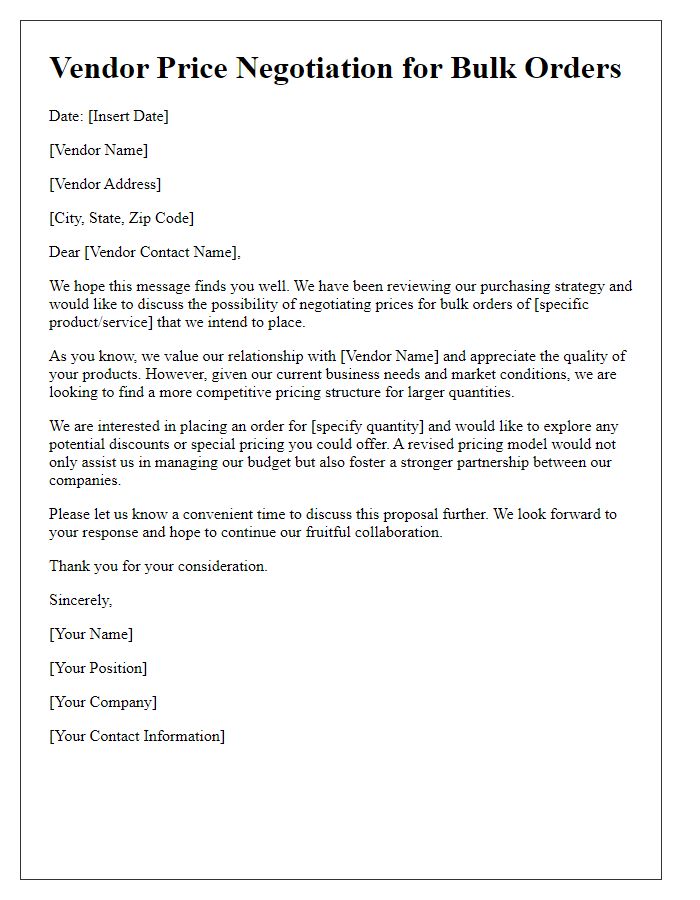
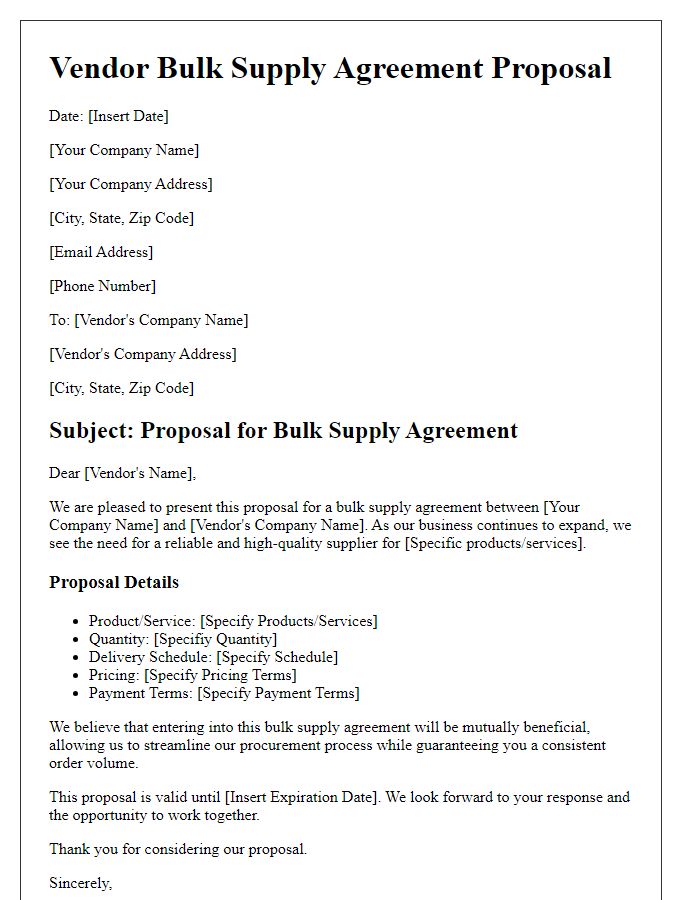
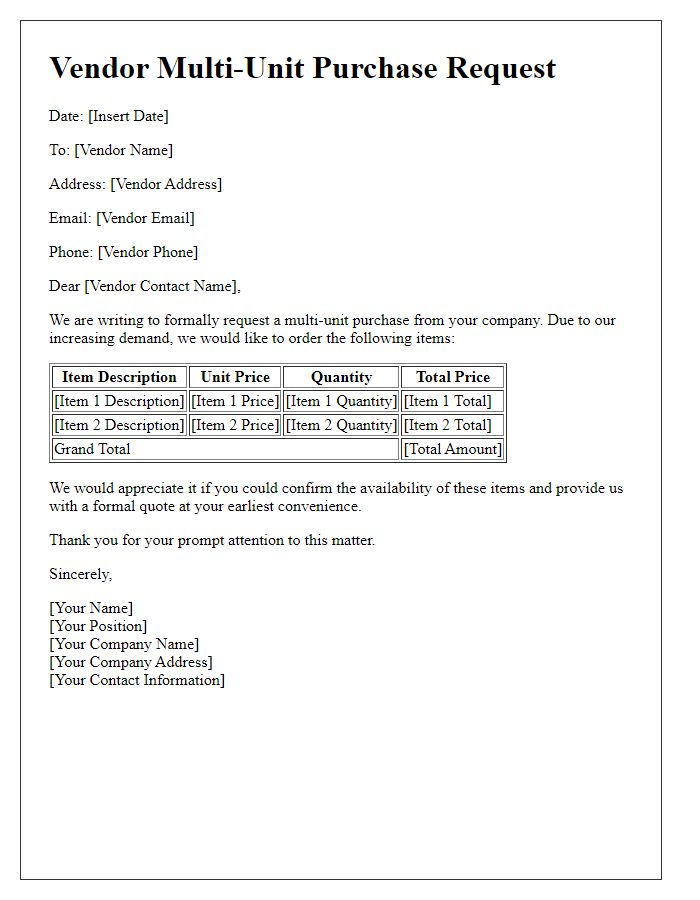
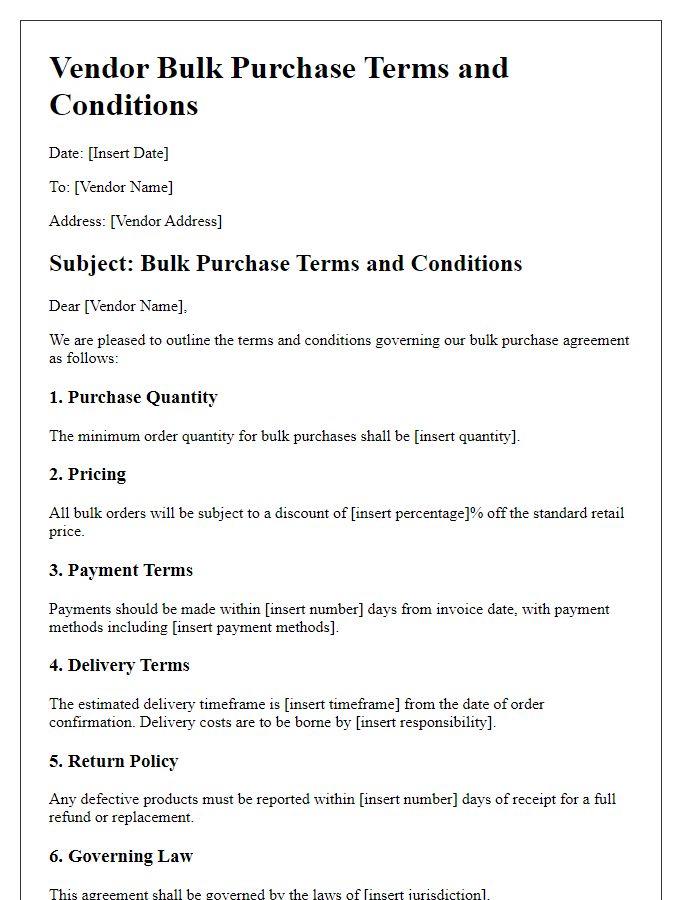
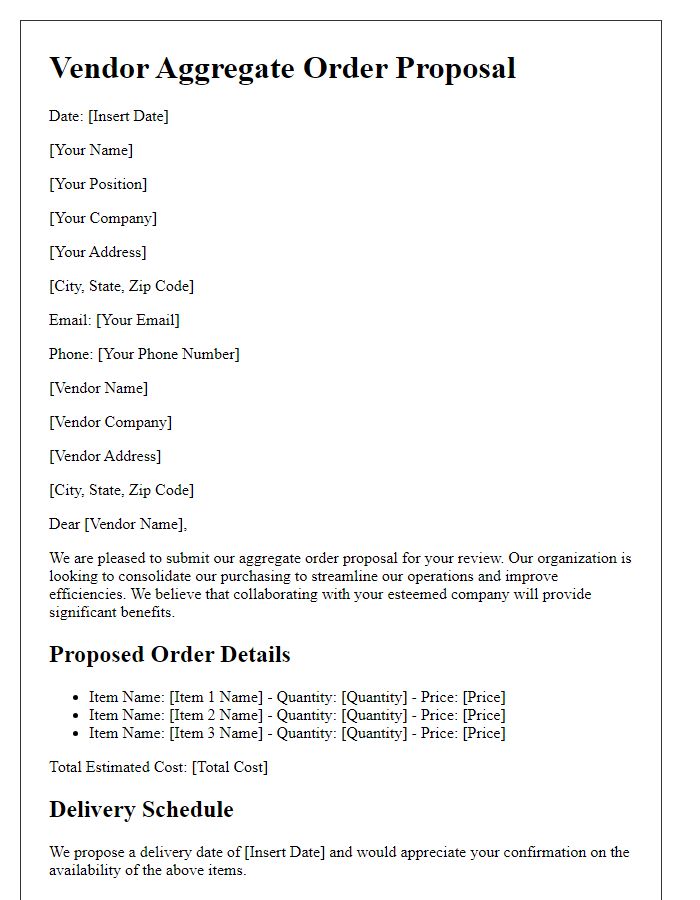

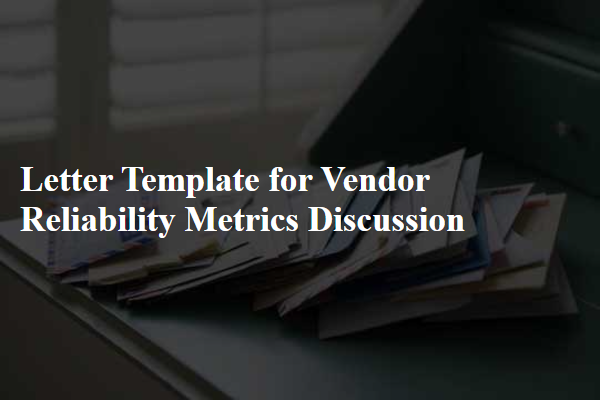
Comments